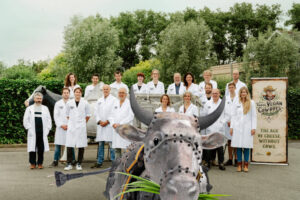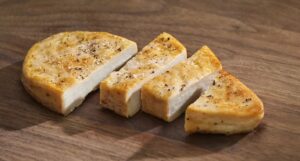Thanks to advances in synthetic biology, we can now engineer microbes to produce everything from enzymes to dairy proteins in fermentation tanks. But when does it make commercial sense?
AgFunder News (AFN) caught up with Dr. Casey Lippmeier, SVP innovation at precision fermentation specialist Conagen at the recent SynBioBeta conference in California to discuss:
- The biomanufacturing bottleneck.
- Regulatory challenges.
- Domesticated vs wild microbes.
Red hot: Using microbes instead of crushed insects to make vivid red pigments
We also covered using precision fermentation to produce carminic acid, a vivid red pigment commonly sourced from crushed cochineal insects that many manufacturers are trying to replace.
“Conagen’s de novo production platform makes it possible to produce and scale high-quality carminic acid in volumes up to thousands of tons, relieving supply chain challenges and potential allergenicity issues posed by incumbent insect-based sources,” said Lippmeier.
“If we can alleviate this supply crunch, we’ll be able to bring the cost more in line with something that’s compatible with larger markets, and hopefully make it in a more sustainable way. So it will probably disrupt natural markets, not only for the beetle-derived source but also for other kinds of natural colors such as beets, which have performance issues.”
He added: “Beetroot juice is great, but it doesn’t hold its color through heating and there are other disadvantages that carminic acid can solve. And if we can get that cost down, we can also be competitive with artificial food colorings [from petrochemicals].
“The existing carminic acid market is small, about $50 million in revenue, because it’s supply limited and expensive. We believe we can open that up quite a lot and become a much bigger market.”
Further reading:
Precision fermentation startups team up to tackle ‘black box’ EU novel foods process
Foodtech startups unite to create Precision Fermentation Alliance
Wild Microbes raises $3.3m in pre-seed round to generate next generation microbial hosts




